How to Teach Diphthongs to Kids: A Fun and Engaging Guide
Welcome to the ultimate guide on teaching diphthongs to kids! Whether you're a parent or a teacher, we've got you covered with tips, tricks, and a dash of humor to make learning diphthongs a delightful experience. Let's dive into the world of diphthongs and discover how to turn those tricky sounds into an engaging adventure for your little learners.
What Are Diphthongs?
First things first, what exactly is a diphthong? It's not a new dance move, although it might sound like one! A diphthong is a complex vowel sound that begins with one vowel and glides into another within the same syllable. Think of it as a vowel sound on a slide, smoothly transitioning from one sound to another. Examples include "oi" in "boil" and "ow" in "cow."
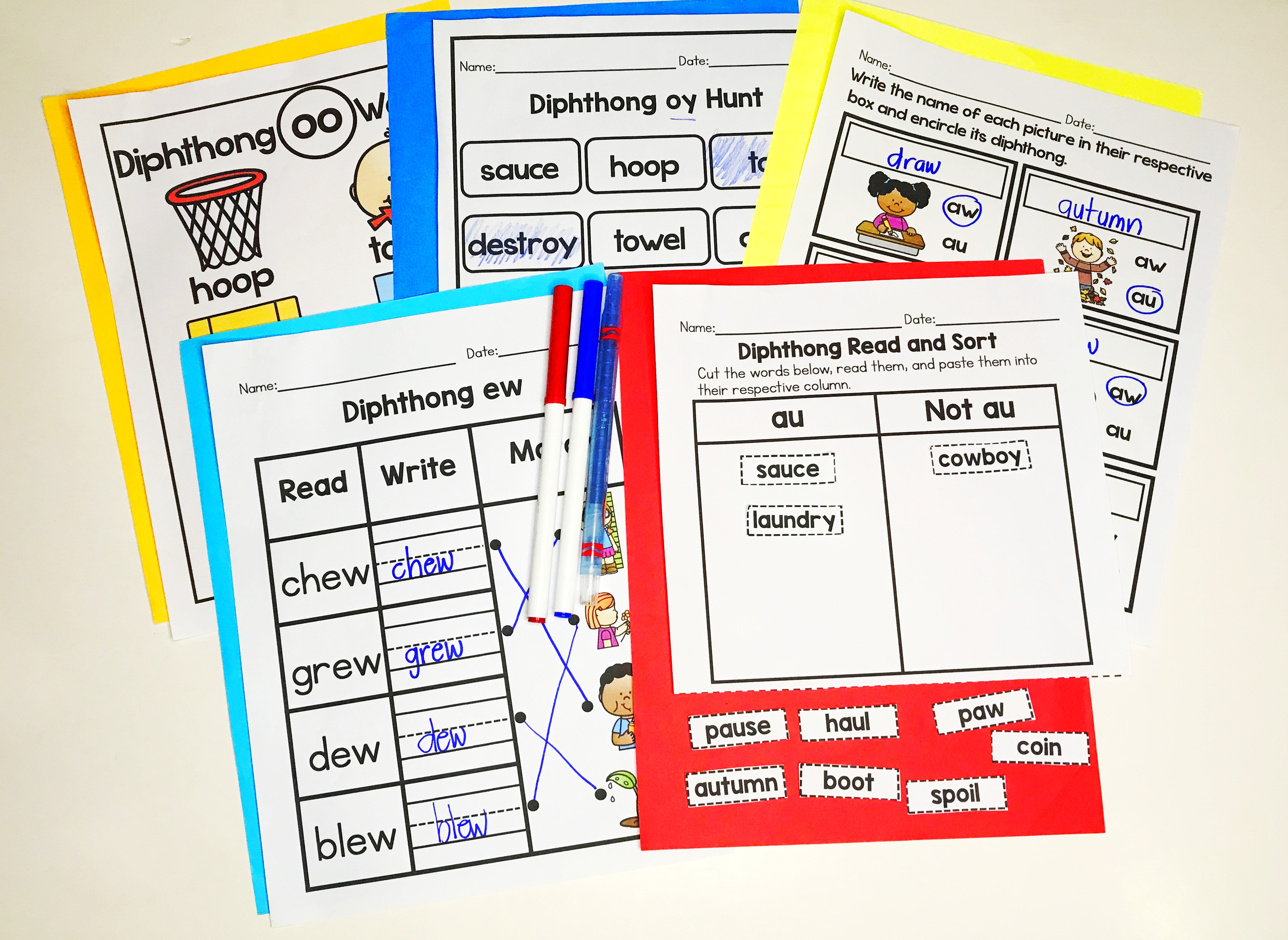
Great Activities for Teaching Diphthongs
Want to make diphthong learning fun and effective? Here are some engaging activities to help young learners master these tricky sounds.
1. Diphthong Coloring Pages
Coloring pages are a fantastic way to introduce diphthong words. With engaging images and corresponding diphthong words, kids will love learning while they color.
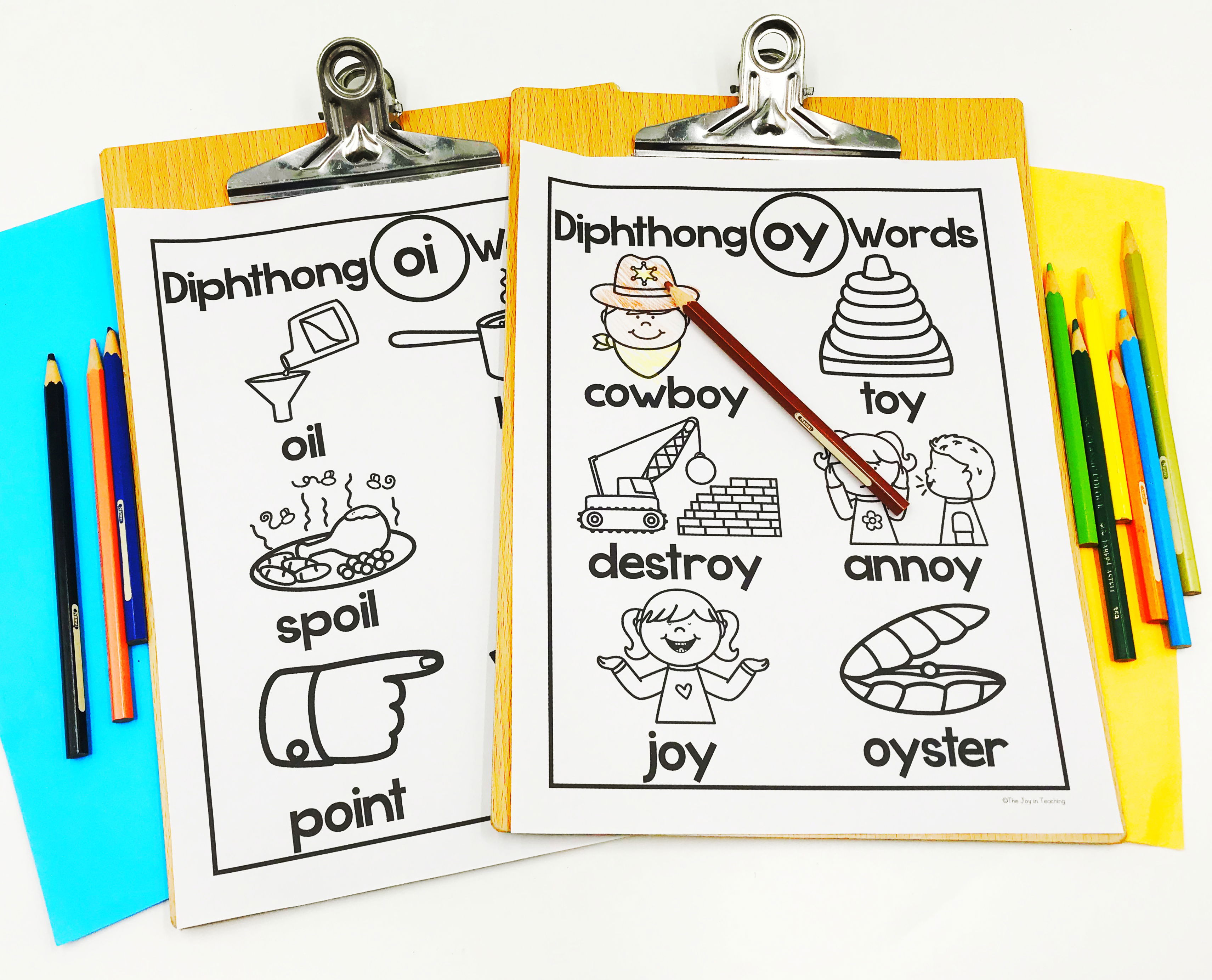
Pro Tip: Use these coloring pages as a warm-up activity. It’s a great way to get kids excited and ready to focus on more structured diphthong exercises.
2. Diphthong Phonics Posters
Brighten up your classroom or learning space with colorful diphthong posters. Each poster features a diphthong team (aw, ew, oi, oo, ow, oy, and ou) with corresponding images and words.
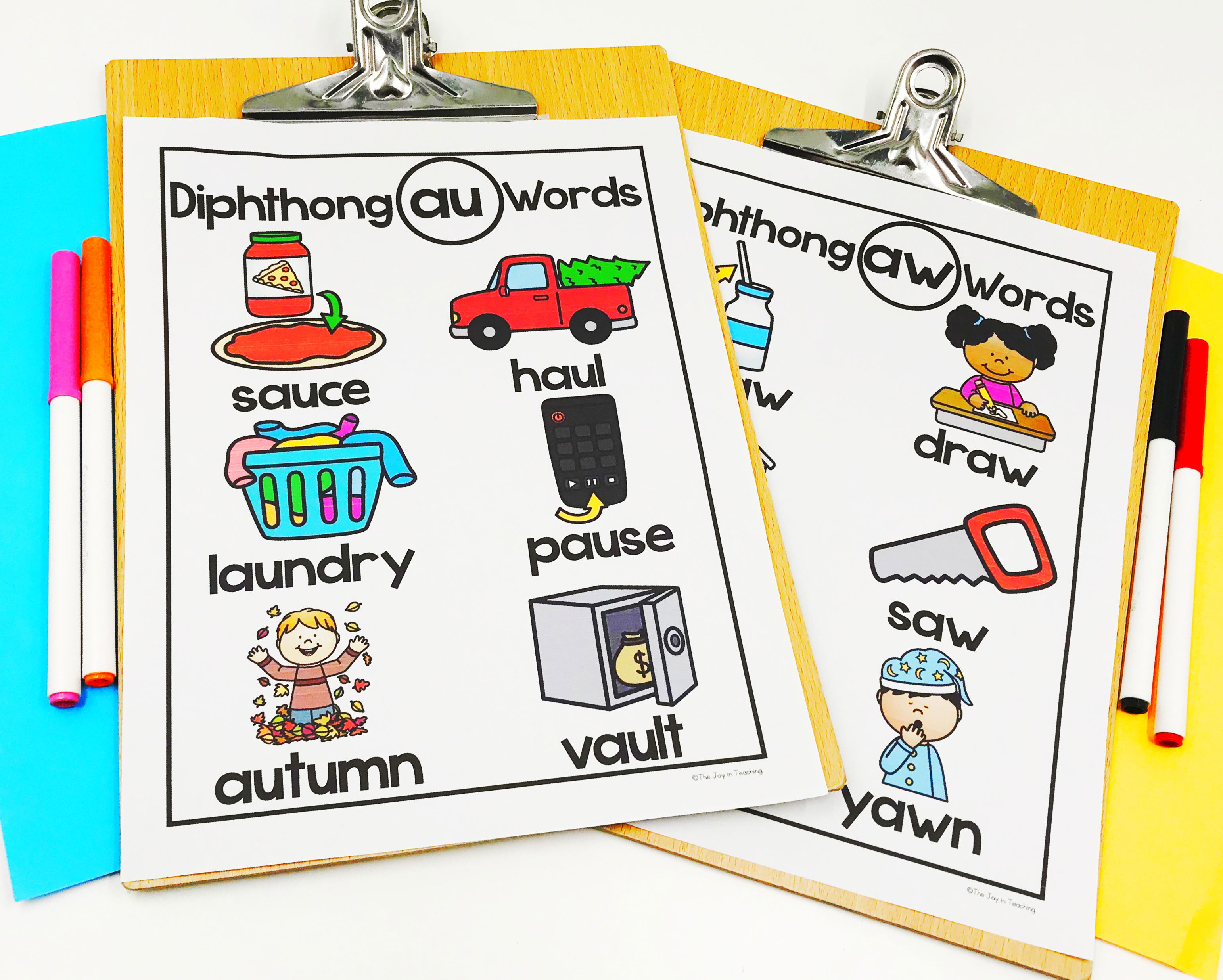
Pro Tip: Hang these posters at eye level for students. Refer to them during lessons to reinforce the sounds and spellings of each diphthong.
3. Diphthong Sentence Flashcards
Make reading sentences a blast with flashcards. Each card features simple sight words and diphthong words, with pictures for visual support.
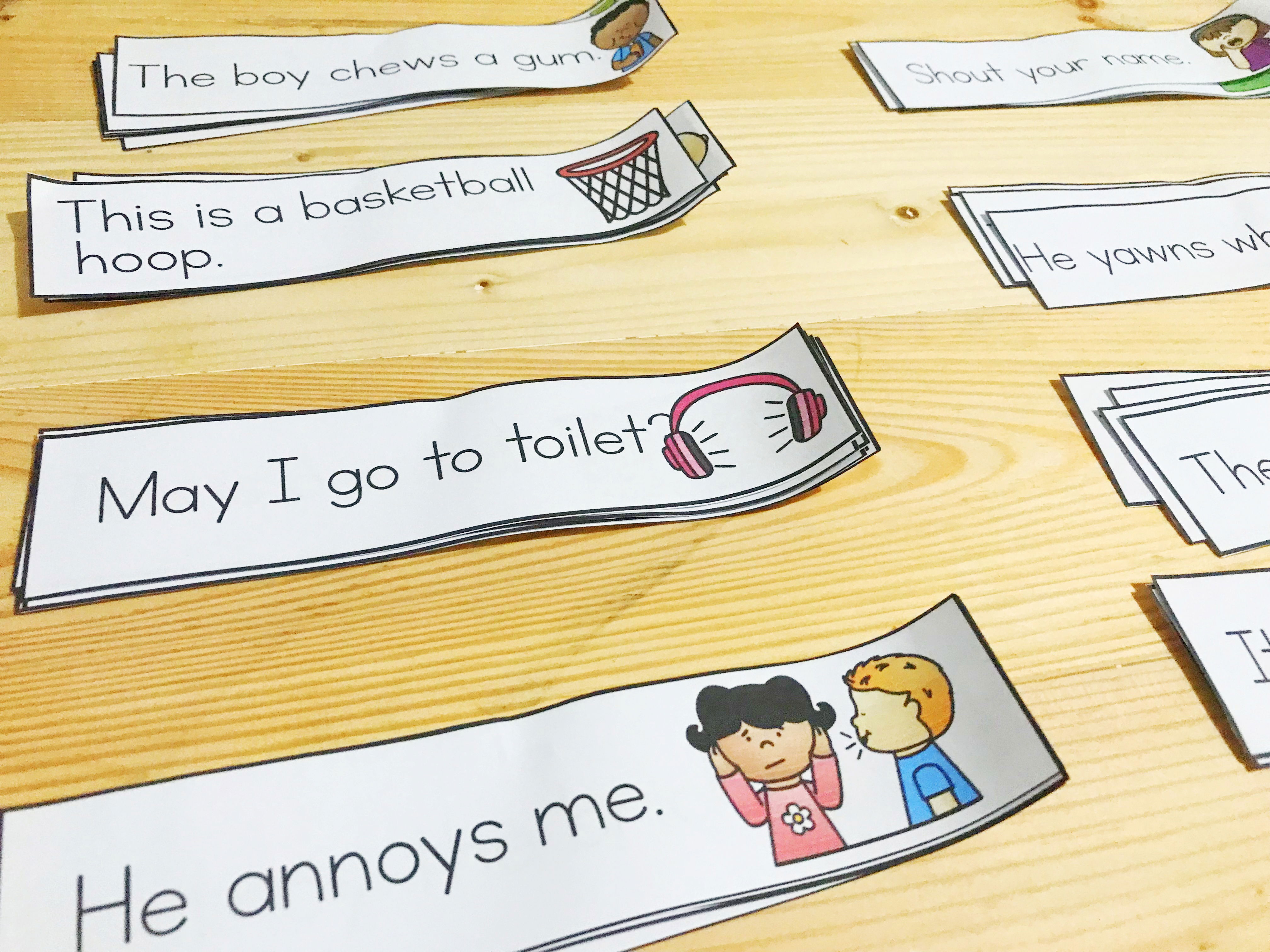
Pro Tip: Turn it into a game! Shuffle the flashcards and have students pick a card and read the sentence aloud. Add some fun by using silly voices or acting out the sentences.
4. Diphthong Team Word Hunt
Engage students with a word hunt activity. These worksheets are versatile – students can color, shade, pin, or highlight the diphthong words they find.

Pro Tip: Create a friendly competition. Divide the class into teams and see which team can find the most diphthong words in a set time.
5. Diphthongs Cut and Paste Word Sort
Enhance fine motor skills while practicing diphthongs with cut-and-paste worksheets. Students sort words into the correct diphthong categories.
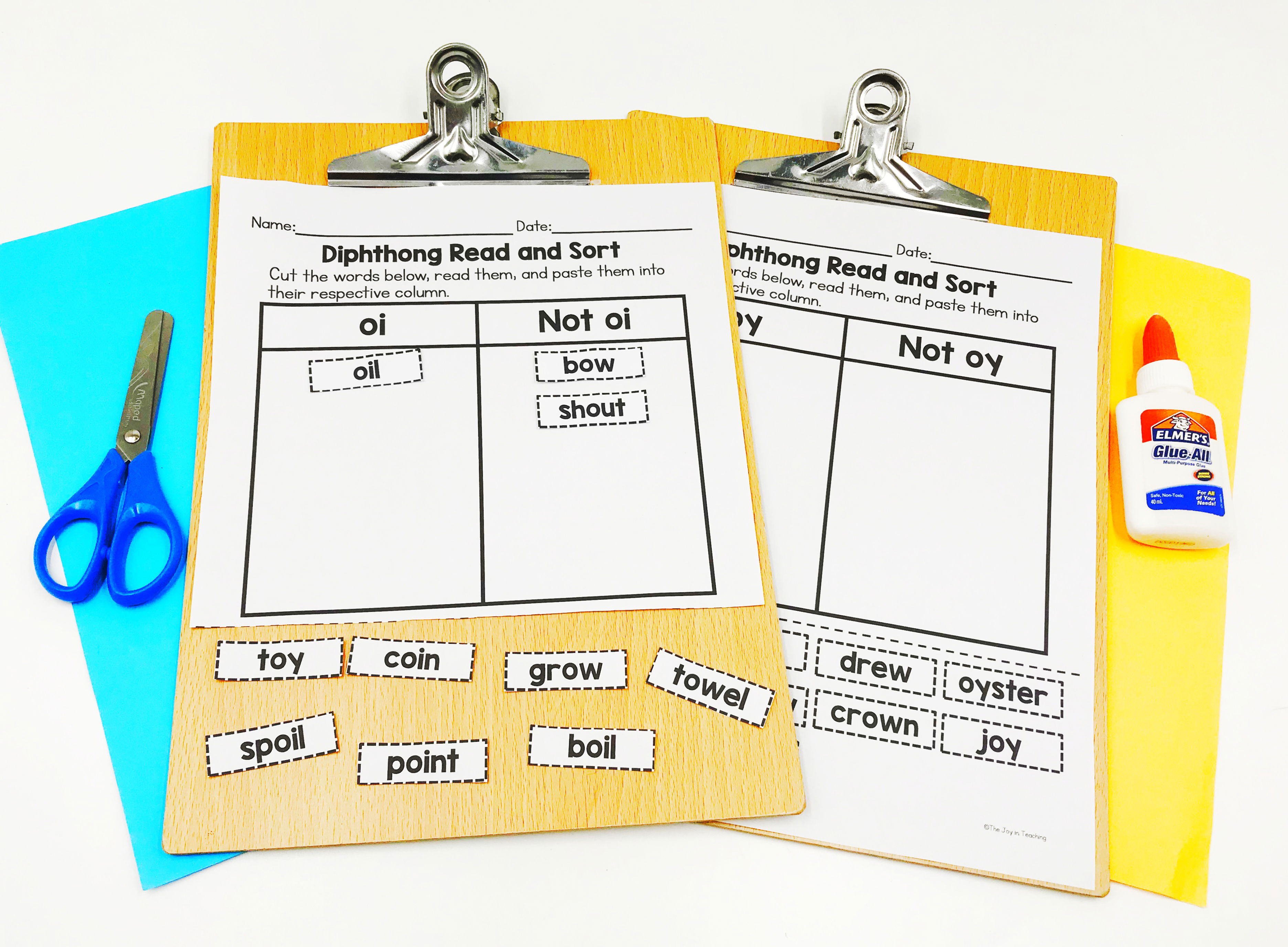
Pro Tip: Make it tactile! Provide safety scissors and glue sticks, and let students cut out the words and paste them onto a chart. It’s hands-on learning at its best.
6. Diphthong Worksheet
Challenge students with engaging worksheets. They’ll practice spelling and identifying diphthongs, enhancing their reading and writing skills.
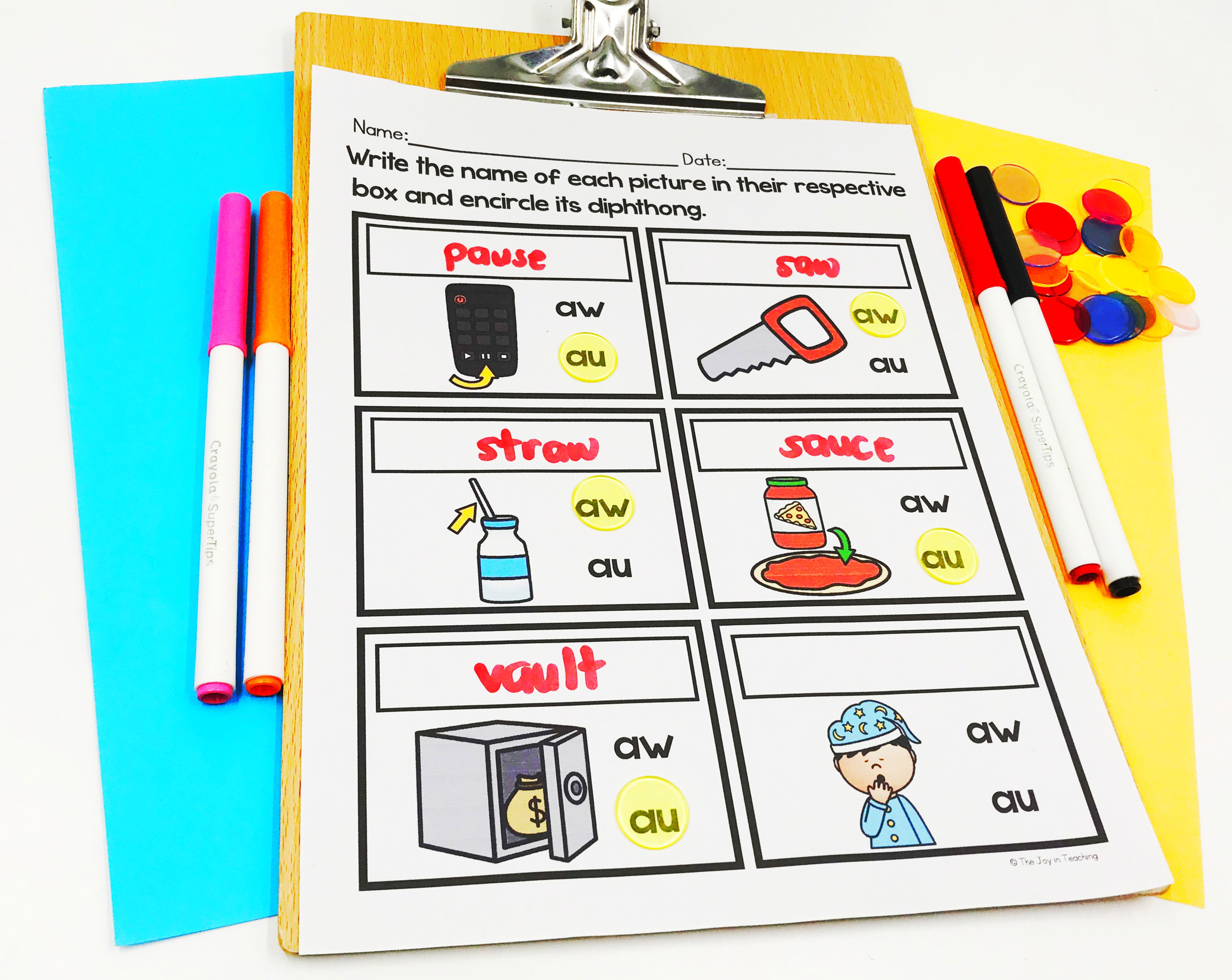
Pro Tip: Use the black-and-white worksheets for class activities and the colored ones for literacy centers. The answer keys are perfect for review sessions.
7. Diphthong Reading Comprehension Passage
These passages are ideal for more advanced learners. They help with reading comprehension and diphthong recognition.
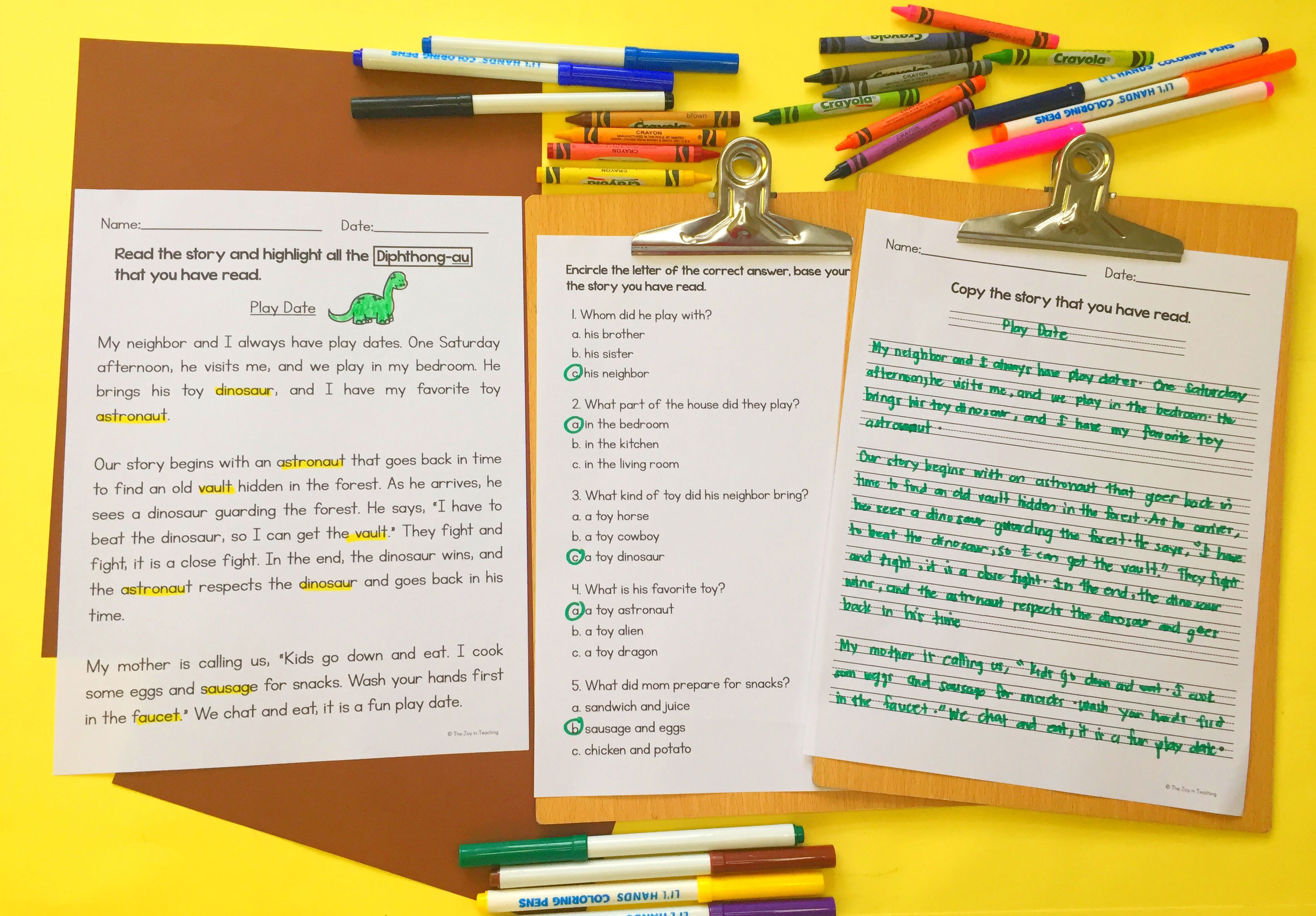
Pro Tip: Use these passages for small group reading sessions. Encourage students to discuss the story and highlight all the diphthong words they find.
8. Diphthong Flashcards
Flashcards come in separate word and picture cards, allowing for matching activities that reinforce diphthong sounds.
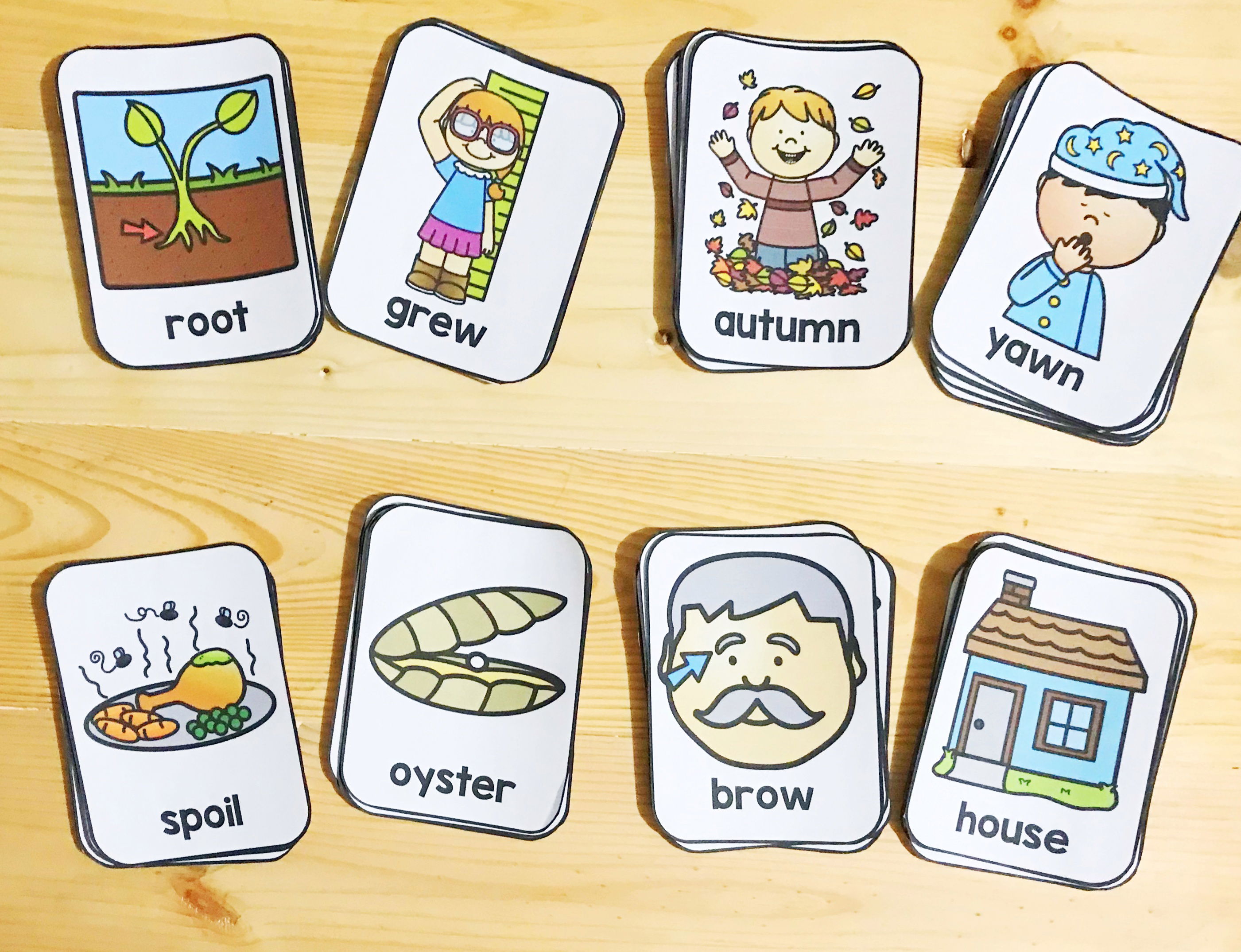
Pro Tip: Mix and match! Have students pair the word cards with the correct picture cards. It’s a fun way to solidify their understanding of diphthongs.
9. Diphthong Tracing Cards
Perfect for writing practice, these tracing cards are reusable when laminated. They help students master the spelling of diphthong words.
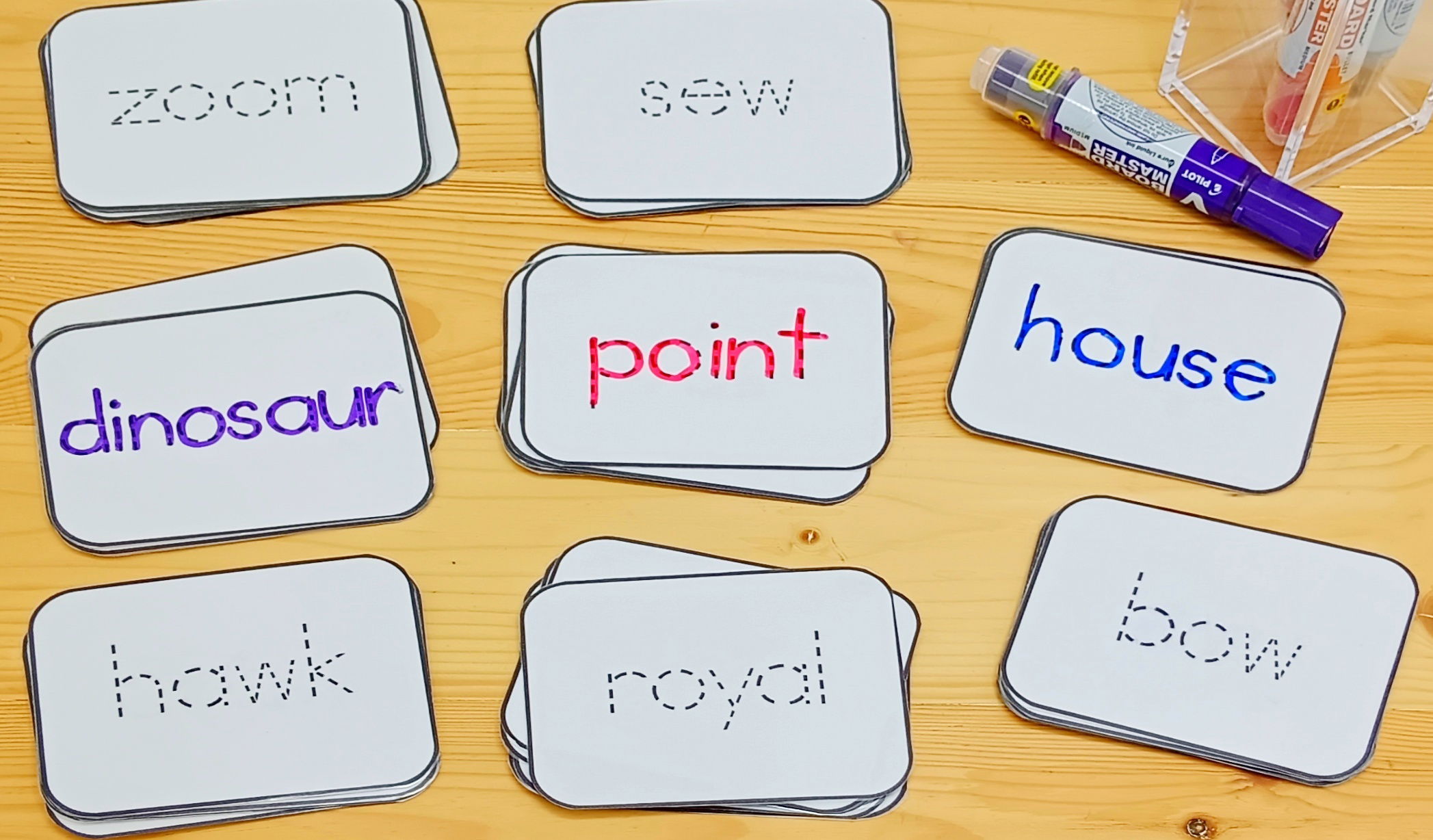
Pro Tip: Set up a tracing station in your classroom or home. Provide dry-erase markers and let students practice writing diphthong words repeatedly.
Tips and Tricks for Teaching Diphthongs
1. Make It Visual – Use posters, flashcards, and coloring pages to provide visual representations of diphthong words. Kids remember words better when they can see them.

2. Incorporate Movement – Engage kids with word hunts or acting out sentences. Movement keeps learning fun and interactive.

3. Use Real-Life Examples – Point out diphthong words during story time or while reading signs on a walk.

4. Keep It Fun – Use silly sentences, funny voices, and playful activities to make learning enjoyable.
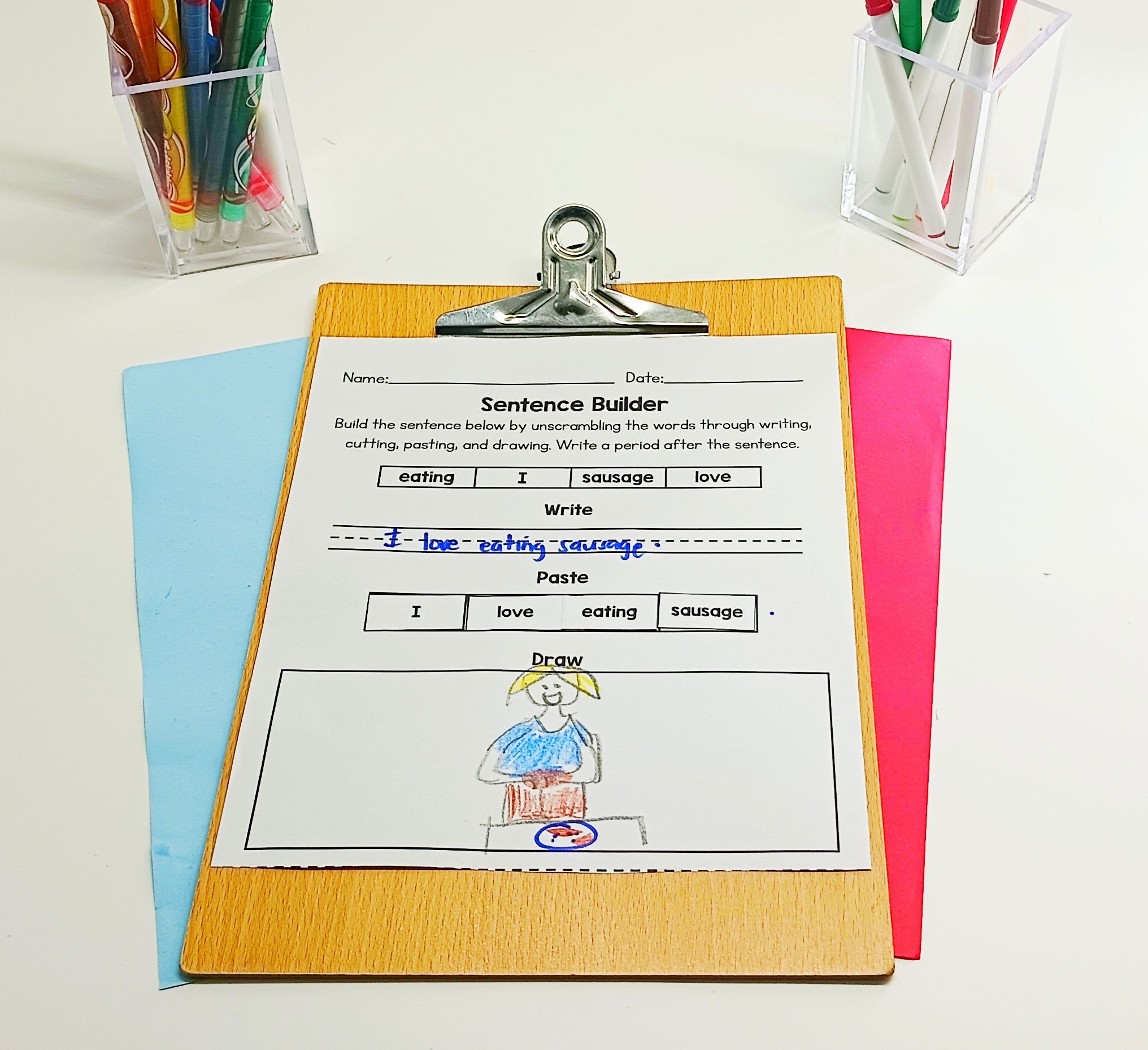
5. Repetition Is Key – Repeat activities and review diphthong words regularly. Consistency helps reinforce learning.
Additional Activities to Practice Diphthongs
Looking for more ways to practice diphthongs? Try these fun activities at home or in the classroom:
- Diphthong Bingo – Create bingo cards with diphthong words and have students mark them as you call them out.
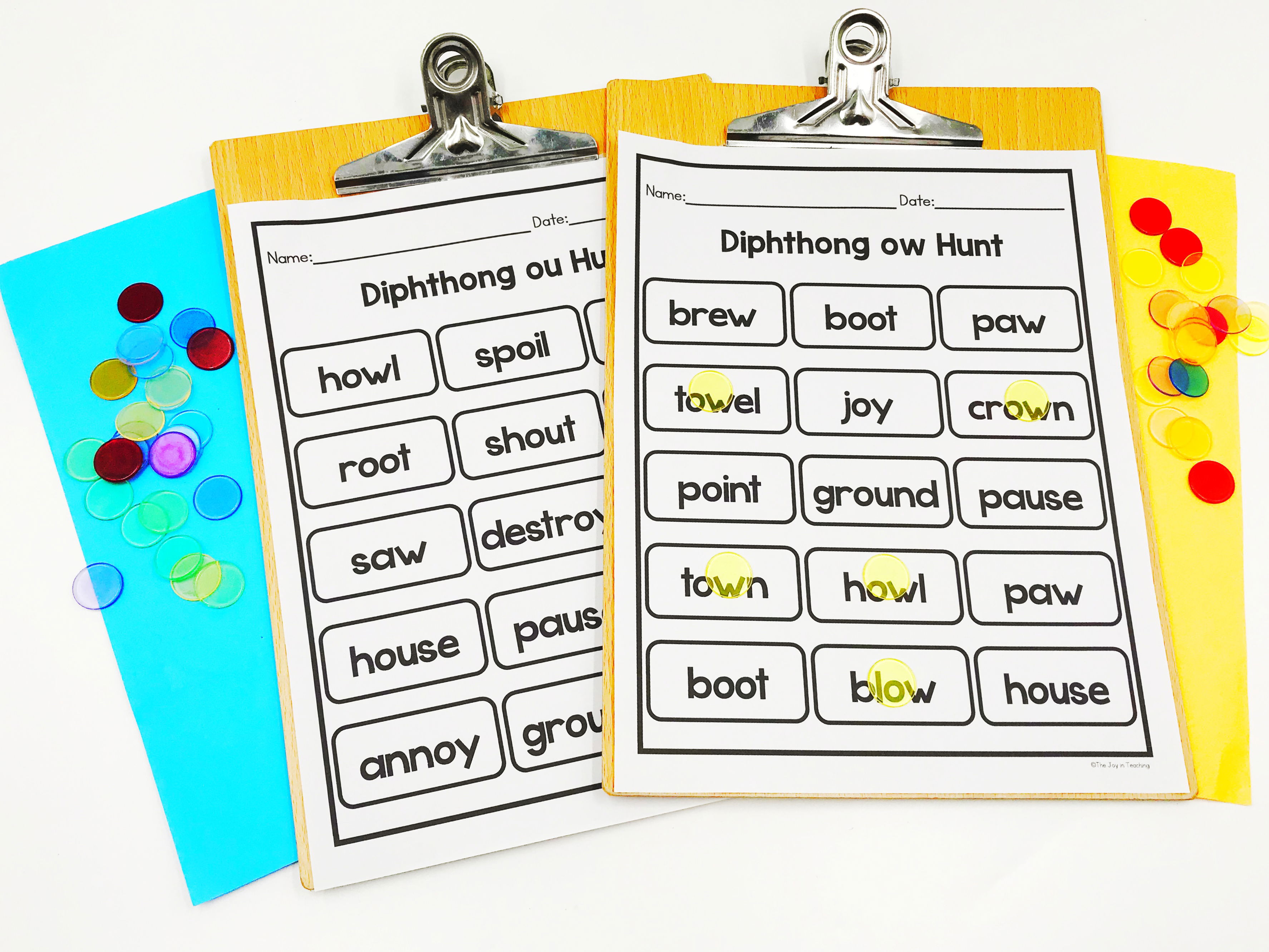
- Diphthong Memory Game – Match word and picture cards in a classic memory game.

- Story Creation – Encourage students to create their own stories using as many diphthong words as possible.

- Word Sort Race – See who can sort the most diphthong words into the correct categories in a set time.
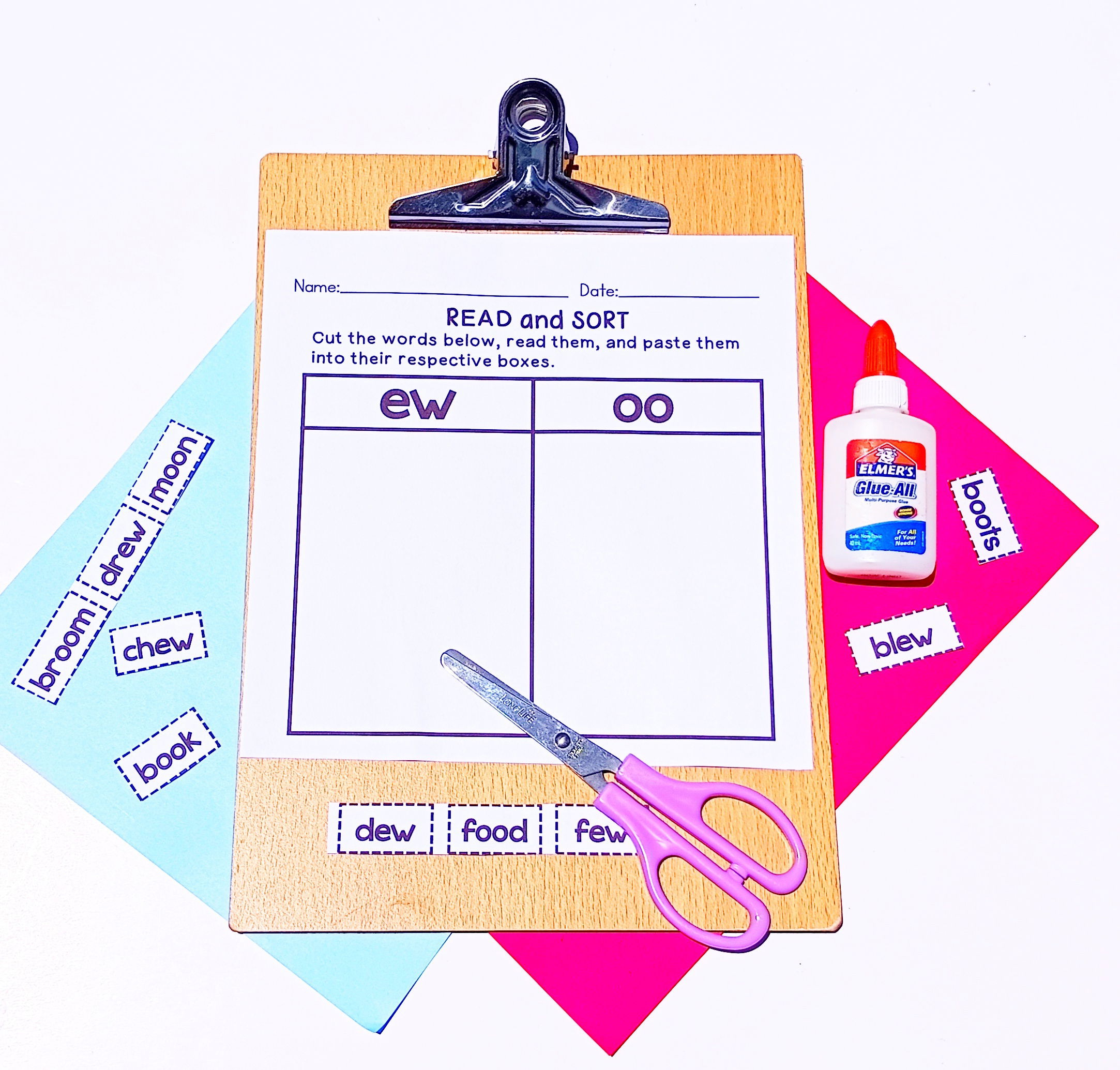
- Diphthong Charades – Act out diphthong words and have students guess the correct word. (like crown!)

Personal Experience: A Parent’s Perspective
Teaching diphthongs can feel overwhelming at first, but with creativity and patience, it can become a fun experience. I started with coloring pages, which my child adored. Word hunts turned our living room into a treasure hunt zone, and flashcards became a favorite activity. By making learning playful, my child’s understanding and pronunciation of diphthongs improved significantly.
Conclusion
Teaching diphthongs doesn’t have to be a dry, monotonous task. With the right resources and a playful approach, you can turn diphthong lessons into an exciting adventure. Use visual aids, incorporate movement, and keep things light-hearted. With patience and creativity, your students will be mastering diphthongs in no time. Happy teaching!
Related Resources:
- Beginning Blends Worksheets and Activities Mega Bundle
- CVC Worksheets and Activities Mega Bundle
- Digraph Worksheets and Activities Mega Bundle
- Ending Blends Worksheets and Activities Mega Bundle
- Long Vowel Worksheets and Activities Mega Bundle
- Bossy R Worksheets and Activities Mega Bundle
- Trigraph Worksheets and Activities Mega Bundle
Follow Me for More Teaching Tips with Joy For more tips, resources, and a daily dose of teaching joy, follow me on:
Got questions or want to share your success stories? Drop me an email at thejoyinteaching@gmail.com. I love hearing from fellow educators and parents! Happy Teaching!
Joy Medalla
The Joy in Teaching 💛